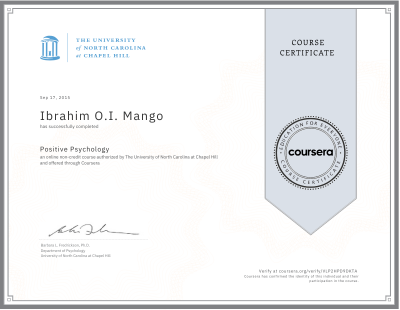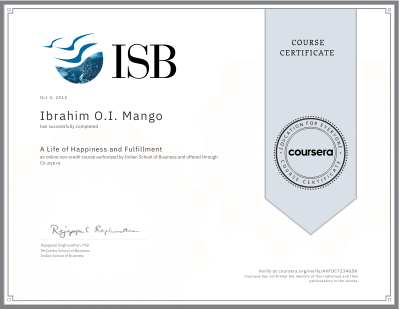Every professional faces moments of self-doubt, anxiety, or fear of failure. These feelings often stem from underlying negative beliefs that can silently sabotage your confidence, productivity, and career progression. For those striving to reach new heights in their professional lives, recognizing and overcoming these limiting beliefs is crucial for personal growth and success.
One of the most effective tools for identifying and challenging these self-defeating beliefs is Cognitive Behavioral Therapy (CBT). While traditionally used in clinical settings, CBT offers powerful techniques that professionals can apply in their daily lives to build mental resilience, increase confidence, and drive success.
In this blog, we’ll explore the hidden impact of negative beliefs on professionals, highlight common limiting beliefs, and dive into actionable CBT strategies to help you identify and overcome the beliefs holding you back.
The Hidden Impact of Negative Beliefs on Professionals
Negative beliefs are like mental roadblocks that prevent you from reaching your full potential. They often develop early in life, shaped by past experiences, relationships, or societal expectations. In professional environments, these beliefs can manifest as self-doubt, perfectionism, fear of failure, or even impostor syndrome.
For instance, a professional who constantly believes, "I'm not good enough," may avoid taking on challenging projects, hesitate to voice their ideas in meetings, or feel unworthy of promotions. Over time, these beliefs erode confidence and create a self-fulfilling cycle of missed opportunities and underachievement.
The good news is that negative beliefs are not fixed. With the right strategies, they can be identified, challenged, and reframed. This is where Cognitive Behavioral Therapy (CBT) comes into play, offering professionals a practical framework for understanding and transforming their thought patterns.
Common Negative Beliefs That Hold Professionals Back
Before diving into how CBT can help, let’s explore some of the most common negative beliefs that hold professionals back:
"I'm not smart or skilled enough": This belief fuels self-doubt and can prevent you from pursuing new opportunities or speaking up in meetings.
"I need to be perfect to succeed": Perfectionism leads to burnout and paralysis by analysis, preventing you from making progress or taking risks.
"I’m an impostor": Impostor syndrome convinces you that you're a fraud and that your successes are due to luck rather than skill.
"I’ll fail, so why even try?": Fear of failure can stop you from trying new things, stunting your growth and keeping you stuck in your comfort zone.
"Others are better than me": Constant comparisons to colleagues can make you feel inadequate and erode your self-worth.
Recognizing these beliefs is the first step toward transforming them. With CBT, you can systematically break down these limiting thoughts and replace them with more empowering, realistic beliefs.
How to Identify and Overcome Negative Beliefs Using CBT
Cognitive Behavioral Therapy is built on the premise that our thoughts, feelings, and behaviors are interconnected. By changing our negative thoughts, we can influence our emotions and actions. Here are six CBT strategies to help you:
1. Recognize Your Thought Patterns:
The first step in overcoming negative beliefs is to become aware of them. Many of our limiting beliefs operate in the background, quietly influencing our behavior without us even realizing it. Start by paying attention to your inner dialogue — especially in moments of stress, fear, or anxiety.
CBT Techniques:
Thought Diary: Keep a thought diary to document your thoughts, feelings, and behaviors throughout the day. When you notice a negative thought, write it down along with the context — what triggered it, how it made you feel, and how you reacted.
Daily Reflection: At the end of each day, take a few minutes to reflect on your thought patterns. Ask yourself if you encountered any negative beliefs and how they influenced your actions.
By tracking these patterns, you'll gain insights into your recurring negative thoughts, enabling you to confront them with greater awareness.
2. Challenge and Reframe Negative Beliefs:
Once you’ve identified your negative beliefs, the next step is to challenge them. Negative beliefs are often irrational or based on faulty assumptions. By questioning their validity, you can start to break their hold over you.
CBT Techniques:
Socratic Questioning: Engage in a dialogic process to examine your beliefs. Instead of simply asking yourself questions, imagine a back-and-forth conversation. For example:
You: "I'm not good at networking."
Questioner: "What do you mean by 'good at networking'?"
You: "Being able to easily start conversations and make connections."
Questioner: "Have you ever successfully started a conversation at a networking event?"
You: "Well, yes, a few times."
Questioner: "So what makes those times different from when you feel you're not good at it?"
You: "I guess I felt more comfortable with the topic or the person seemed approachable."
Questioner: "If you can do it sometimes, does that mean you're entirely 'not good' at networking, or perhaps that you have some skills you can build on?"
You: "I suppose I do have some skills. Maybe I'm better than I thought."
Questioner: "How might you use what you've learned from your successes to improve your networking in the future?"
Reframing: Once you’ve questioned your negative beliefs, practice reframing them into more positive, constructive statements. For example, instead of thinking, "I'm not good at networking," reframe it to "I can improve my networking skills with practice." By reframing, you shift from a mindset of doubt and fear to one of confidence and capability.
By reframing, you shift from a mindset of doubt and fear to one of confidence and capability.
3. Use Behavioral Experiments to Test Your Beliefs:
CBT encourages the use of behavioral experiments — small, controlled actions you can take to test your negative beliefs in real life. If you believe, "I’m terrible at networking," try attending a low-stakes networking event and observe the results.
CBT Techniques:
Design an Experiment: Identify a belief you want to challenge and design a small experiment to test it. For example, if you believe that "nobody wants to talk to me," set a goal to initiate a conversation with at least one person during a meeting.
Gather Evidence: After completing your experiment, reflect on the outcome. Did the results align with your negative belief? If not, document the evidence that disproves your belief. This evidence will help you build a more realistic perspective.
These experiments help you confront your fears and gather data that proves your negative beliefs are often exaggerated or completely untrue.
4. Develop Positive, Affirming Self-Talk:
While it’s important to challenge negative beliefs, it’s equally essential to replace them with positive, affirming self-talk. Think of self-talk as the inner coach that encourages you to push through doubt and build resilience.
CBT Techniques:
Affirmation Statements: Create a list of positive affirmations that counter your negative beliefs. For instance:
"I am capable of learning and improving."
"I have valuable skills to offer."
"I don’t need to be perfect to succeed."
Visualization: Spend a few moments each day visualizing yourself succeeding in your professional endeavors while repeating your affirmations. This practice reinforces positive self-talk and builds self-confidence.
Repeating these affirmations daily — especially in moments of doubt — will help transform your internal dialogue, making it more supportive and empowering.
5. Practice Gradual Exposure to Fearful Situations:
One of the most effective ways to overcome fear-based beliefs is through gradual exposure. If you fear speaking up in meetings or presenting in front of a group, the natural tendency is to avoid these situations altogether. However, avoidance reinforces the belief that you can’t handle it.
CBT Techniques:
Create an Exposure Hierarchy: List the situations that trigger your anxiety in order from least to most intimidating. For example, starting with speaking in small group meetings, then progressing to larger meetings, and finally to making a presentation.
Gradual Exposure: Begin with the least intimidating situation on your hierarchy. After successfully confronting that fear, gradually move on to the next level. Each successful experience will chip away at the negative belief and boost your confidence.
This systematic approach allows you to face your fears in a controlled manner, ultimately desensitizing you to anxiety-provoking situations.
6. Incorporate Mindfulness to Ground Yourself:
Mindfulness is a powerful tool that helps you stay present and grounded, especially when negative beliefs start to take over. When you feel anxious or overwhelmed by self-doubt, practicing mindfulness can help you detach from your thoughts and view them with a clearer, more objective perspective.
CBT Techniques:
Mindful Breathing: Take a few moments to focus on your breath whenever you feel anxiety creeping in. Inhale deeply for a count of four, hold for four, and exhale for six. This technique helps center your thoughts and calm your mind.
Body Scan: Practice a body scan meditation where you mentally check in with different parts of your body, noticing any tension or discomfort. Acknowledge these sensations without judgment and let them pass. This exercise helps you develop awareness of your physical responses to negative beliefs.
By incorporating mindfulness into your daily routine, you can create space between your thoughts and reactions, allowing you to respond to anxiety with clarity rather than panic.
Conclusion
Negative beliefs can quietly hold you back from achieving your full potential as a professional, but with the tools and techniques of Cognitive Behavioral Therapy, you can overcome these mental barriers. By recognizing your thought patterns, challenging irrational beliefs, testing them through behavioral experiments, and developing positive self-talk, you can break free from limiting beliefs and build the confidence you need to thrive.
Changing deeply ingrained thought patterns takes time and practice, but with consistent effort, you’ll see a transformation in how you approach challenges, interact with others, and pursue your goals.
Take the first step today by identifying one negative belief that’s holding you back and using these CBT strategies to start dismantling it. You have the power to rewrite your inner narrative — and with it, your path to success.
FAQs
1. How long does it take to see results from using CBT techniques?
The time it takes to see results from CBT techniques varies depending on individual circumstances and the complexity of the negative beliefs being addressed. Some people may notice changes within a few weeks, while others might take several months of consistent practice. The key is to remain patient and committed to the process.
2. Can I practice CBT techniques on my own, or should I seek professional help?
While many CBT techniques can be effectively practiced on your own, working with a trained therapist can provide personalized guidance and support, especially if you're dealing with deeply ingrained negative beliefs or significant emotional distress. Consider starting with self-help techniques and seek professional assistance if you find it challenging to progress.
3. Are there any specific resources or tools you recommend for learning more about CBT?
Yes! For learning about CBT, Feeling Good: The New Mood Therapy by Dr. David Burns is a great book that provides practical exercises for challenging negative thoughts. Online courses on platforms like Coursera and Udemy offer structured learning with interactive quizzes. Apps like Moodfit and CBT Thought Diary can help track moods and thoughts while providing exercises. Additionally, organizations like the Anxiety and Depression Association of America (ADAA) offer free worksheets to practice CBT techniques effectively.










